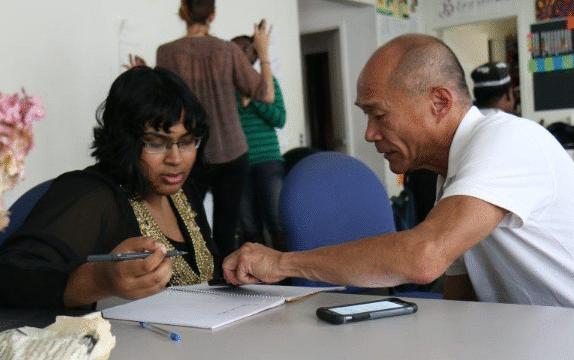Pursuing a learning certificate can be one of the smartest
investments you make in yourself. These programs are
designed to help you build practical skills, strengthen
your résumé, and often open new career opportunities. Yet, for many people, the thought of covering tuition, books, and related costs can feel like a barrier. The good news is that there are many creative and accessible ways to fund your learning certificate program without overwhelming your finances. With a little planning, resourcefulness, and persistence, you can find the right combination of options to make your educational goals affordable.
First, it helps to begin with a clear budget. Every certificate program comes with its own costs, ranging from a few hundred to several thousand dollars. In addition to tuition, you may also need to consider technology fees, online platform subscriptions, or materials. By knowing exactly what the program will cost, you can create a financial plan that shows where the money will come from. This is the first step toward making your dream more tangible and less intimidating.
One of the most common ways people fund their learning certificates is through personal savings. If you are able to set aside a portion of your income, even small amounts over time, you may be surprised at how quickly it adds up. Some learners create a dedicated savings account just for educational expenses. That way, the money is kept separate from daily living costs and can only be used for learning goals. Automating contributions into that account is another smart way to ensure steady progress.
Another avenue worth exploring is employer support. Many organizations recognize the value of ongoing training and may be willing to invest in your growth. Employers often offer tuition reimbursement, skill development budgets, or professional development stipends. Even if your company does not advertise such programs, it is worthwhile to ask your manager or human resources department. If you can show how the certificate will help you perform better in your current role, your employer may be more inclined to help cover the expenses.
Scholarships and grants are also an excellent way to reduce costs. While they are more commonly associated with full-time college programs, many institutions, professional associations, and nonprofit organizations offer scholarships specifically for certificate or continuing education students. Some are based on financial need, while others are tied to specific fields of study or career goals. The key is to research widely and apply to as many opportunities as you qualify for. A few small scholarships can collectively cover a significant portion of your tuition.
For learners who need immediate financial help, payment plans offered directly by schools can be a lifesaver. Many certificate programs understand that students have different financial situations and therefore allow tuition to be paid in installments. Instead of covering the entire cost upfront, you may be able to break it down into monthly or quarterly payments, which makes it easier to manage alongside other expenses. Always ask the program’s admissions or financial office about flexible payment options.
If payment plans are not enough, low-interest education loans can also provide a solution. Some financial institutions, as well as online lenders, offer loans tailored for professional development or continuing education. Before committing, it is important to compare interest rates, repayment terms, and fees. A loan should be viewed as an investment in your future, but it should also be managed responsibly to avoid unnecessary financial strain.
Another creative way to fund your program is through part-time or freelance work. Many people take on side projects that not only provide extra income but also align with their future career interests. For example, someone pursuing a digital marketing certificate might offer freelance social media management. This creates an opportunity to earn money while also practicing skills that are relevant to their program.
Crowdfunding is becoming more common for education as well. Platforms allow students to share their goals with friends, family, and community members who may be eager to support their journey. When explaining your campaign, be clear about why you are pursuing the certificate, how it will benefit your career, and what it means for your future. Transparency and authenticity often inspire others to contribute.
Government support is another potential resource. Depending on where you live, there may be workforce development funds, tax credits, or subsidies available for adult learners. These programs are often designed to encourage skill-building in high-demand fields, such as healthcare, technology, and skilled trades. Local government websites or career development centers can provide guidance on available programs and eligibility requirements.
For some learners, reducing costs in everyday life can also free up money for education. Simple strategies like preparing meals at home, cutting down on subscription services, or setting a strict monthly budget can help redirect funds toward tuition. While these adjustments may feel small at first, they can create meaningful room in your finances over the course of several months.
It is also important to recognize the long-term value of a learning certificate. While the upfront cost may feel daunting, the skills and qualifications you gain can lead to higher earnings, promotions, or new career opportunities. When viewed as an investment rather than just an expense, the decision often makes more sense financially. Many students find that the benefits of completing a certificate outweigh the short-term sacrifices they make to pay for it.
Staying motivated throughout the funding process is just as important as finding the money itself. It can be easy to feel discouraged if saving takes longer than expected or if scholarship applications do not always succeed. But persistence pays off. Keep your end goal in mind and remember why you started. Every step you take toward funding your education is also a step toward building the career and life you want.
Finally, combining multiple strategies is often the most effective approach. For example, you might use a mix of employer support, a small scholarship, and a personal savings plan. By blending different sources, you reduce the pressure on any single option and increase your chances of covering all expenses comfortably.
Funding your learning certificate program does not have to be overwhelming. With careful planning, creativity, and a willingness to explore different resources, you can make your education affordable and attainable. Whether through savings, employer assistance, scholarships, or alternative income streams, there are many ways to take charge of your future. Investing in your learning today is one of the most powerful steps you can take toward long-term success and fulfillment.






